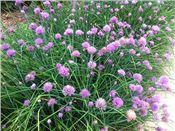Gardening Tips For May
Take softwood cuttings of plants like azalea, forsythia, clematis, chrysanthemum and geranium. Dip cuttings into rooting hormone and plant into a 6-inch container with good moist potting soil. Pull clear/ opaque plastic bag over top and container. Place in an area with high light but not direct sun. Cutting should be well rooted in 6 weeks if not before.
When setting out vegetable transplants, pour one cup of starter solution in the hole around the plant. To prepare this solution, mix fertilizer with 15–30–15, 10–53–17, or 20–20–20 analysis at the rate of 2 tablespoons per gallon of water.
Finish planting by adding muskmelons, squash, eggplant, okra, peppers, and sweet potatoes.
Direct sow beans, peas, corn and okra. dill, basil and cilantro are some easy direct-sow herbs. If you prefer to get your garden green quickly, garden centers have plenty of young plants available for sale. Plant the “high sugar” or sugar sweet corn varieties after May 1 because the seeds do not germinate in cold garden soils.
Plant summer-flowering bulbs such as dahlias, gladioli, cannas, and lilies. Soil temperature should have reached 55 degrees F. With gladiolas, consider planting some additional bulbs every two weeks until mid-June to ensure a continuous source of bloom.
Plant peonies no more than 2 inches deep and they should receive at least 6 hours of sunlight daily. This will ensure flowering.
Caladiums and annual vinca need warm soil to thrive. Caladium tubers will rot in cool soil, and vinca will be disease-prone, or exhibit stunted growth. Night temperatures should regularly be above 60 degrees F before planting them. If caladium ever gets chilled, it is slow to recover.
Direct seed easy-to-grow flowering annuals like marigold, zinnia, sunflowers and cosmos. Stagger planting by every week or two through July to have flowers until frost. ∆
Article from the University of Arkansas Extension
I

In May, Plant culinary herbs like rosemary, basil, oregano, chives, sage, and parsley. Rosemary, oregano, sage, and chives are perennials. Basil is an annual and parsley is a biennial forming a rosette of foliage the first year and flowering in the second growing season. Let it go to seed and usually you will find little parsley seedlings sprouting around the base of the declining mother plant.
Photo courtesy of Gerald Klingaman